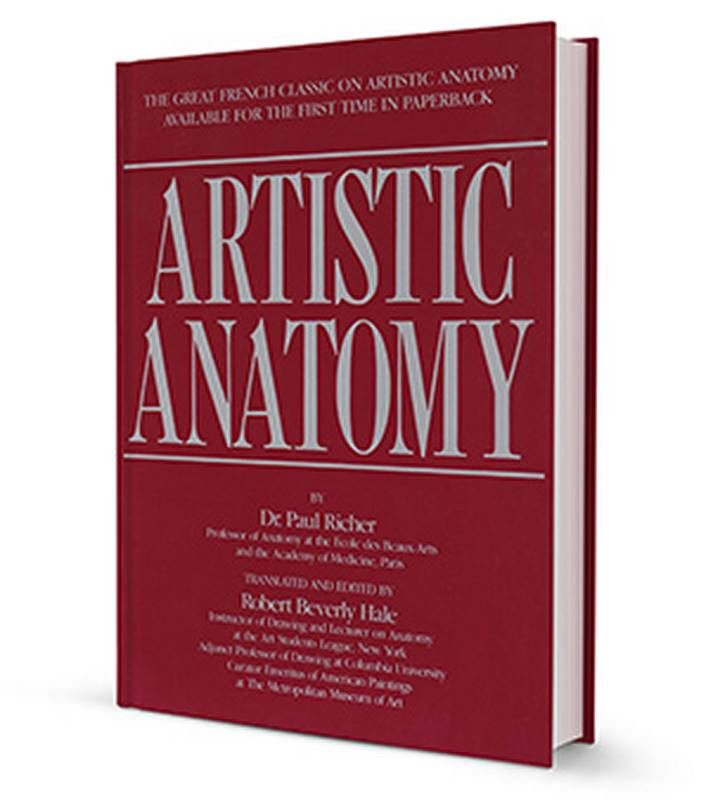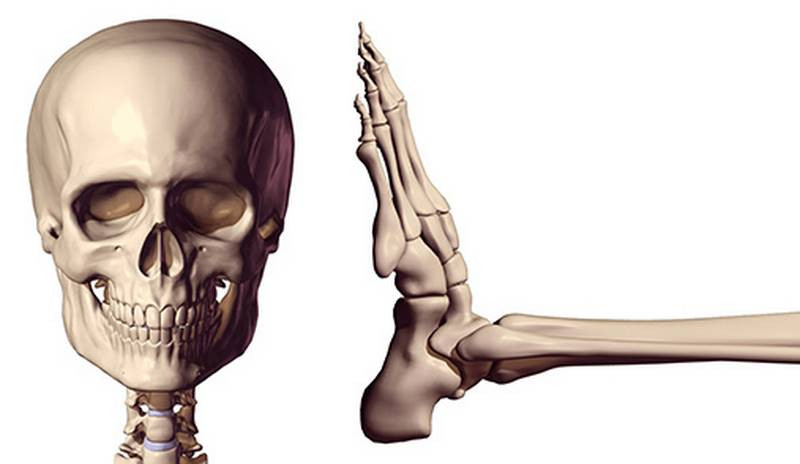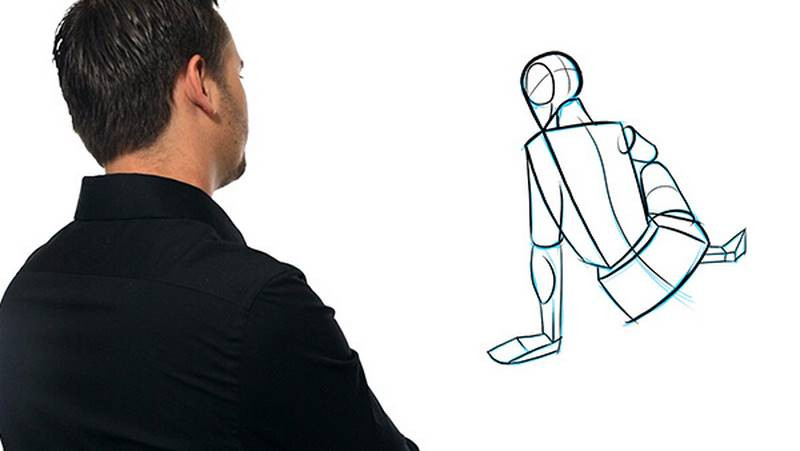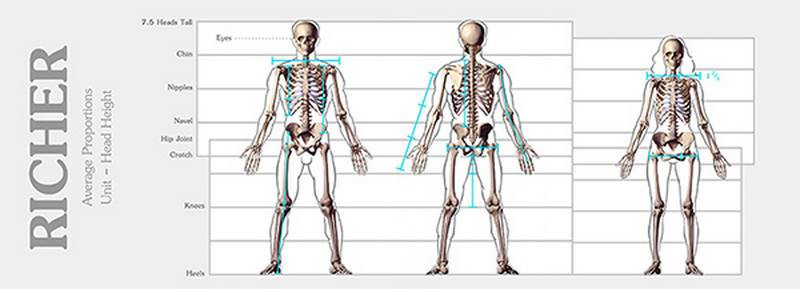
This diagram is available for purchase as a Poster or a downloadable high resolution image in the premium section.
Studying the average human proportions is a common practice among artists. Even though everyone's proportions are slightly different it's very useful to have a guide - something to keep your drawing from looking wrong. Knowing the average proportions gives you something to measure from.
Dr. Paul Richer, a pioneer in human anatomy says there are two reasons why artists study human proportions
- We try to find harmony, a reason why we are the way we are. The Greeks tried to find that perfect model of beauty.
- We want a method to help us during the drawing process. We want an easy way to make our figure drawings proportionally accurate and a guide to fall back on when our drawings feel wrong. These guides are useful when we observe the model, but especially when we draw from imagination.
When familiar with a system, we can choose to deviate from it in whichever way we want. After all, we are artists.
"Proper proportions lie not in pages of statistics, nor in the dogma of scientists, but in the mind of the individual artist. Proportions are entirely his responsibility, his decision." Robert Beverly Hale
The Pitfalls
The most obvious drawback of any proportion system is that it works only when the figure is not foreshortened. These systems work great when a person is standing up straight, but not so well in other poses.
"drawing the ideal average results in a drawing without character. Also the figure must be eye level, upright and rigid. Bending of the body changes the proportions visually, but not actually" George Bridgman
So in the end, it's just a guide. It won't solve all our problems. We have to combine it with careful observation and frequent study from live models. Doing so will help you to visualize the proportions of the masses in 3D, to sense when a body part is too large or small in relation to the whole. Also helps to study perspective and construction to develop the ability to turn the forms while retaining the dimensions.
Richer's Average Human Proportions - 7.5 Heads
Dr. Paul Richer's "Artistic Anatomy" presents a scientific system for an average European male as measured by Anthropologists. He uses the height of the head as 1 unit and says that the average person is 7.5 heads tall. The head and torso together make up 4 units. The leg, from the top of the femur to the ground, is another 4 units. The top and bottom overlap by half a unit, creating a total of 7.5. The halfway point is at about the pubic bone.
When the arms are extended to the side, the width between the fingertips is just a smidgen longer than the height - about 4% longer. It's an insignificant amount, so for practical purposes we can just consider them equal.

From the chin, down one head unit are the nipples. The next unit down is at the navel, which is the top of the glutes in the back. The next head unit down is at the bottom of the glutes and crotch.
Another useful measurement in the back is 1 head length from the 7th cervical vertebra to the bottom of the scapula. And 2 units to the PSIS.
Similarly, from the acromion process down to the ASIS measures 2 head units. The same for the width of the shoulders including deltoids. So this section of the body fits into a nice square. However, on a female the shoulders are narrower. About 1 2/3 head heights.
On a female, there's 1.5 heads between the two greater trochanters. The hips on a male are slightly narrower.
The Femur measures 2 head units. Or, in the back you can remember that from the bottom of the glutes to the bottom of the femur is 1.5 units.
The length of the lower leg, including the foot is also 2 head units.
The middle of these 4 head units is at the connection of the femur and the tibia. Remember that when the leg is extended, this connection is at the bottom of the patella. When the leg flexes it gets more complicated. So, study the bony protrusions of the knee area so that you can identify the bottom of the femur and top of the tibia.
]Richer points out that the distance from the ASIS to middle of Patella is equal to the distance from patella to the ground. And the foot is a bit longer than the head.
Finally let's move on to the arms. The length of the arm, from the armpit is 3 head units. The top point is somewhere below the shoulder joint.

The second one is above the olecranon and the third above the wrist.
Because these units don't align well with the anatomy of the arm, Richer prefers another method. From the acromion to the epicondyles is equal to epicondyles to the knuckles.v
Alrighty! That’s the first Proportion System I’ll be covering. In the next lesson, I’ll go over Robert Beverly Hale’s system, based on the cranial mass instead of the height of the head.
Premium Drawing Lesson
The premium section has a third system of proportions based on Andrew Loomis’ idealized 8 Heads tall figure. These proportions are widely used in fine art and illustration.
I've created a downloadable diagram that you can print out for your reference, with a high-res version available in the premium section. Or you could purchase it as a poster.
Study Richer's average figure proportions
Study Richer's average figure proportions. Copy them. Then, put the reference away and see if you can draw them from memory!







